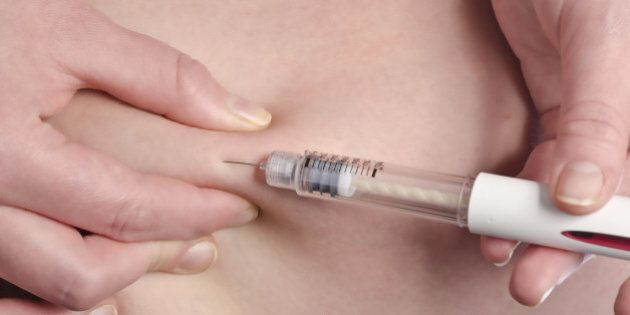
Up to 2.5 million Australians are undiagnosed and dangerously at risk of developing diabetes, the fastest growing chronic disease in Australia.
The alarming statistic comes ahead of the World Health Organisation's (WHO) World Health Day on Thursday, which this year is dedicated to targeting and 'beating' diabetes.
Referring to WHO figures, Diabetes NSW said if diabetes was a country it would be the third largest country in the world.
Each year, the WHO chooses a priority area of global public health concern as the theme for World Health Day and this year hopes to increase the awareness surrounding diabetes.
The WHO identifies 347 million people worldwide have diabetes which makes up nine percent of all adults. Ninety percent or 312 million of those people with diabetes around the world have type 2.
Renza Scibilia, manager of type one diabetes and consumer voice for Diabetes Australia, told The Huffington Post Australia diabetes is a major global health challenge in the 21st century and one of the biggest threats to economies around the world.
"Diabetes is a growing trend in Australia. Last year, for the second year in a row, 100,000 Australians were diagnosed.
"It's a very significant health challenge. It needs to be recognised and it needs to be talked about," Scibilia said.
According to Diabetes NSW, one in 10 Australians die each year from type two diabetes-related illnesses.
Diabetes NSW CEO Sturt Eastwood said Australians need to learn to read the signs of diabetes better.
"Type 2 diabetes...kills more of us than breast, prostate and brain cancer combined in any one year and costs our healthsystem $14.6 billion a year," Eastwood said.
By 2025, that number could increase to $30 billion, he said.
Scibilia said there are about two million Australians with pre-diabetes -- the early stage of diabetes -- and that group is at a high-risk of developing the disease.
"We know that there are hundreds of thousands of people with undiagnosed type 2 diabetes," Scibilia said.
Both Eastwood and Scibilia agree Australians can halt the increase in diabetes across the country by working to prevent the disease.
Last year Diabetes Australia welcomed the release of the new Australian National Diabetes Strategy 2016-2020
"We are thrilled about the strategy. It has been given to all state territory health ministers, but now we need to act and see what the implementation will be.
"We need a national program, like the United States who systematically identify people who are at high risk of developing diabetes and helping them access a prevention program in their community.
"In Australia we have seen that in Victoria where the government has funded a prevention program since 2008 and Queensland is now funding a similar program," Scibilia said.
Eastwood said stopping the rise of type two diabetes is possible.
"We know that 58 percent of type two diabetes cases are preventable through lifestyle changes.
"It requires a coordinated effort from our government, health professionals, employers, the media and individuals themselves to better read the signs, manage and prevent diabetes," Eastwood said.
Diabetes is a metabolic disease characterised by elevated levels of blood glucose.
"Within the 2030 Agenda for Sustainable Development, Governments have set an ambitious target to reduce premature mortality...by one third; achieve universal health coverage; and provide access to affordable essential medicines -- all by 2030," the WHO website states.